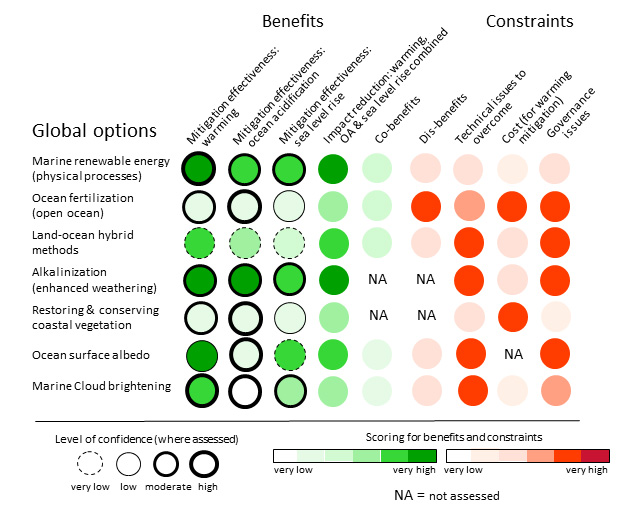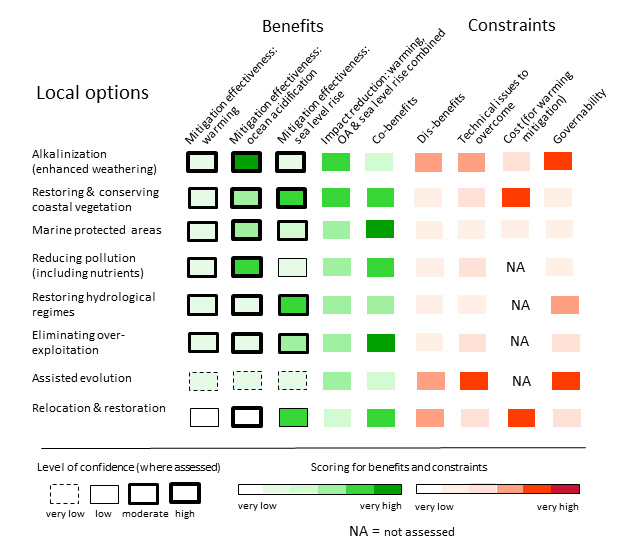
Guest post: 13 ‘ocean-based solutions’ for tackling climate change

Dr Phillip Williamson
10.04.18
Dr Phillip Williamson
04.10.2018 | 10:00amDr Phillip Williamson is an honorary reader at the University of East Anglia and science coordinator of the UK Greenhouse Gas Removal from the Atmosphere research programme, which is coordinated by the government-funded National Environment Research Council (NERC).
There will be at least one inescapable conclusion in the upcoming publication of the Intergovernmental Panel on Climate Change’s special report on 1.5C: unconventional interventions will be needed to avoid dangerous climate change.
That was already a between-the-lines message of Article 4 of the Paris Agreement, which recognised the need for “net-zero emissions” – and, hence, pro-active greenhouse gas removal from the atmosphere – to effectively tackle climate change.
All the options, therefore, need to be on the table – not just the land-based approaches, such as planting new forests and bioenergy with carbon capture and storage (BECCS) – which have dominated conversations to date.
This week, myself and colleagues attempt to address this gap by publishing an analysis of 13 ocean-based actions to address climate change and its impacts. The study considers the effectiveness and feasibility of both global-scale and local ocean-based solutions using information from more than 450 other publications.
Each potential action was assessed for a range of environmental, technological, social and economic criteria, with additional consideration given to each action’s impacts on important marine habitats and ecosystem services.
Global ocean solutions
![]()
The study assesses seven ocean-based actions that have the potential to be deployed on a global scale. For the analysis, it was assumed that each technique was implemented at its maximum physical capacity.
Each technique was rated for its “mitigation effectiveness” – which was defined as how well the technique could help move the world from a high emissions scenario (“RCP8.5”) to a low emissions scenario where warming is limited to 2C (“RCP2.6”) – for a range of problems associated with climate change, including temperature rise, “ocean acidification” and sea level rise.
![]()
The study also assesses the constraints posed by each method, including its potential “disbenefits” (unintended negative consequences), overall costs, and outstanding technical and governance issues.
The chart below shows the results for each technique, which are explained in more detail below. On the chart, dark green indicates a very high benefit and light green shows a very low benefit, while bright red indicates very high constraints and pink shows a very low constraint. Thick black rings are used to show a high level of confidence, while dotted rings show very low confidence.

The benefits and constraints posed by seven global ocean-based actions for tackling climate change. Dark green indicates a very high benefit and light green shows a very low benefit, while bright red indicates very high constraints and pink shows a very low constraint. Thick black rings are used to show a high level of confidence, while dotted rings show very low confidence. Source: Gattuso et al. (2018)
Two of the global-scale actions are already partly underway: marine renewable energy, such as wind, wave and tidal power, and the restoration and conservation of coastal vegetation, primarily mangroves, saltmarshes and seagrasses.
Such habitats are also known as “blue carbon” ecosystems and are characterised by their biomass and associated sediments, which have high carbon storage per unit area.
Restoring coastal vegetation could provide many co-benefits by, for example, protecting coastal areas from floods and nurseries for inshore fisheries.
However, protecting blue carbon scored very much lower than marine renewable energy as a climate control measure, both in its ability to mitigate climate change – largely due to the limited area available for its implementation – and with regard to its cost-effectiveness.
Four unconventional ocean-based actions scored highly for potential climate control. The first is alkalinisation, a marine version of “enhanced weathering”, which involves adding chemicals to seawater to neutralise acidity or remove CO2.
The next two are “solar geoengineering” techniques, which would tackle global warming by reflecting away sunlight. These include increasing “ocean surface albedo” (the reflectiveness of the ocean), which could be achieved by covering the sea surface with reflective foam, and “marine cloud brightening”, which would work by using ships to spray saltwater into the clouds above the sea to make them more reflective.
The last are “land-ocean hybrid methods” for CO2 removal. These are methods that harness both the land and sea, such as marine-based BECCS, which would use algae in the place of traditional bioenergy crops.
But all of these engineered “solutions” have potentially serious disadvantages: they require extensive technological development with thorough safety-testing and their deployment is likely to be controversial. They could also be limited by governance issues.
Local ocean solutions
The study also considers six local ocean-based actions that could tackle climate change.
These include tackling water pollution, restoring natural hydrology (water flows, such as in saltmarshes) and sediment delivery to coastal ecosystems, eliminating over-exploitation of marine resources, and establishing marine protected areas.
Another local technique explored by the study was “assisted evolution” – defined as attempts to harness the power of evolution to make species more tolerant to the impacts of climate change. One example of this could be to make coral species more tolerant to heat stress.
The last technique is reef relocation and restoration. This can involve transplanting healthy coral into a degraded reef following a mass bleaching event, in order to aid its recovery.
(Alkalinisation and blue-carbon conservation were also considered in terms of their local, as well as global, mitigation benefits.)
Each of these techniques is assessed on the chart below for their potential overall effectiveness in tackling temperature rise, ocean acidification and sea level rise – as well as for their possible constraints.

The benefits and constraints posed by six local ocean-based actions for tackling climate change. Dark green indicates a very high benefit and light green shows a very low benefit, while bright red indicates very high constraints and pink shows a very low constraint. Thich black rings are used to show a high level of confidence, while dotted rings show very low confidence. Source: Gattuso et al. (2018)
From these assessments, there appears to be – not surprisingly – no single silver bullet for tackling climate change: the diverse approaches present different combinations of benefits and constraints.
Many of the local techniques, including establishing marine protected areas and eliminating over-exploitation of marine resources, would not deliver a very large benefit in terms of tackling global warming. However, they would come with considerable co-benefits, such as by providing sanctuary to endangered wildlife.
Turning tides
The overall conclusion of our research is that deciding what are the “best” ocean solutions will depend on the importance given to the trade-offs, governance considerations, and regional and ecosystem-specific factors posed by each.
Nevertheless, our research shows that several ocean actions have clear potential to either address the causes of climate change or help natural ecosystems cope with unavoidable consequences of global warming at 1.5C, 2C or higher.
Because of this, they deserve, in some cases, scaled-up deployment or, in others, increased levels research and development.
The climate crisis cannot be easily solved by actions on land or at sea alone – but the role of the ocean should not be neglected.
Gattuso, J.-P. et al. (2018) Ocean solutions to address climate change and its effects on marine ecosystems, Frontiers in Marine Science, doi:10.3389/fmars.2018.00337

